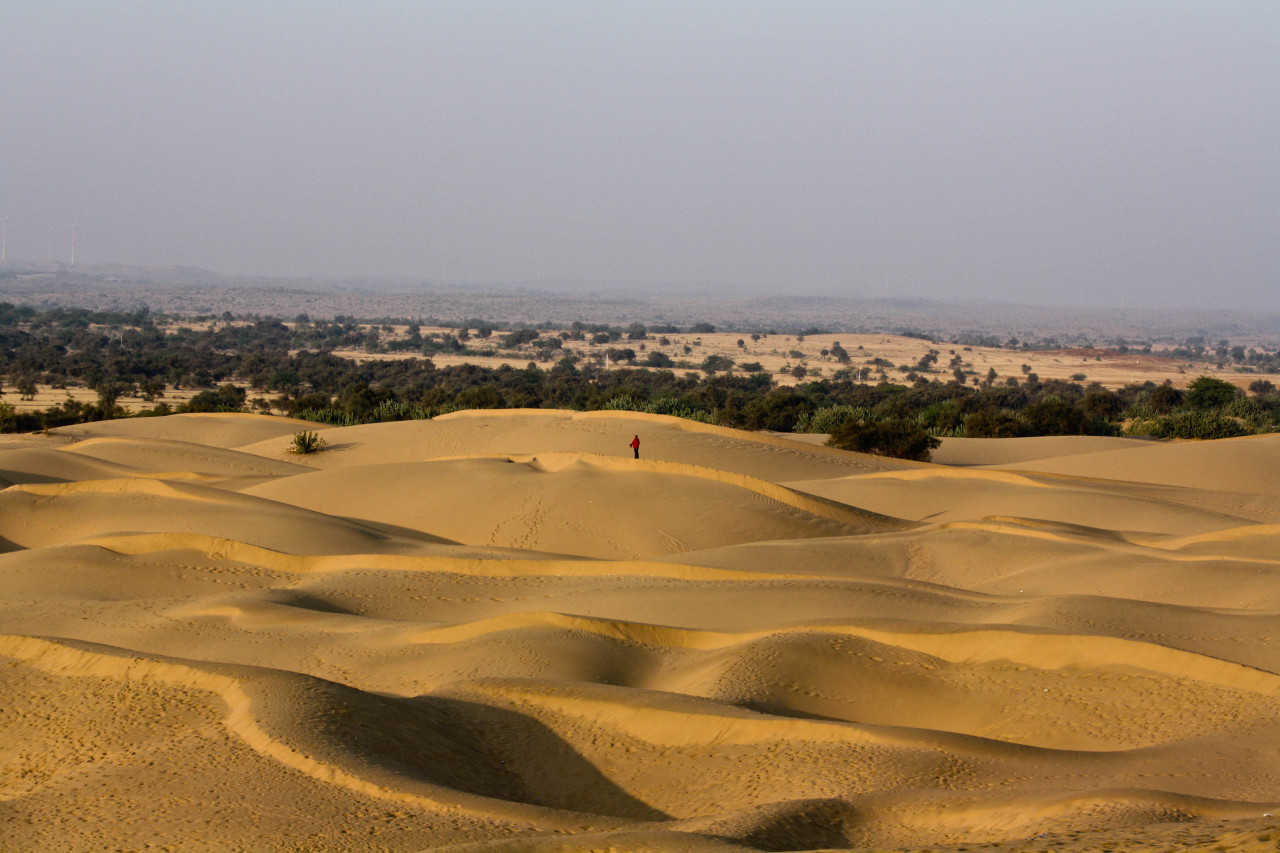Thar desert On the border between India and Pakistan, bounded by the Indus River system, sits the Th
Thar desertOn the border between India and Pakistan, bounded by the Indus River system, sits the Thar desert, part of India’s Desert National Park.The Thar is one of the smaller deserts on Earth, almost 50x smaller than the Sahara. It is also one of the youngest deserts on Earth, as it only formed in its current state during the climate shifts after the last ice age. The Thar Desert is considered a “monsoon” desert – the dominant wind direction brings airmasses over it from the East during the monsoon season, but most of the moisture in those airmasses is dumped out over the rest of India. By the time air crosses the Aravalli hills on the eastern edge of the Thar, it has mostly dried out, leaving a desert as the end result.The Thar is the most heavily populated desert on Earth, with nearly 100 people living there per square kilometer (compared to less than 10 in deserts like the Sahara). It is home to variety of unique wildlife; for example, it is the only home for 11% of the reptile species living in India. It also contains a fossil/petrified wood site, with the remnants of trees from the Jurassic era preserved in the rocks and exposed today.-JBBImage credit: http://bit.ly/1WIO30VReferences:http://pubs.usgs.gov/gip/deserts/types/https://en.wikipedia.org/wiki/List_of_deserts_by_area http://whc.unesco.org/en/tentativelists/5448/ -- source link
#desert#national park#travel#geology#india#nature#landscape#monsoon#indus#river
